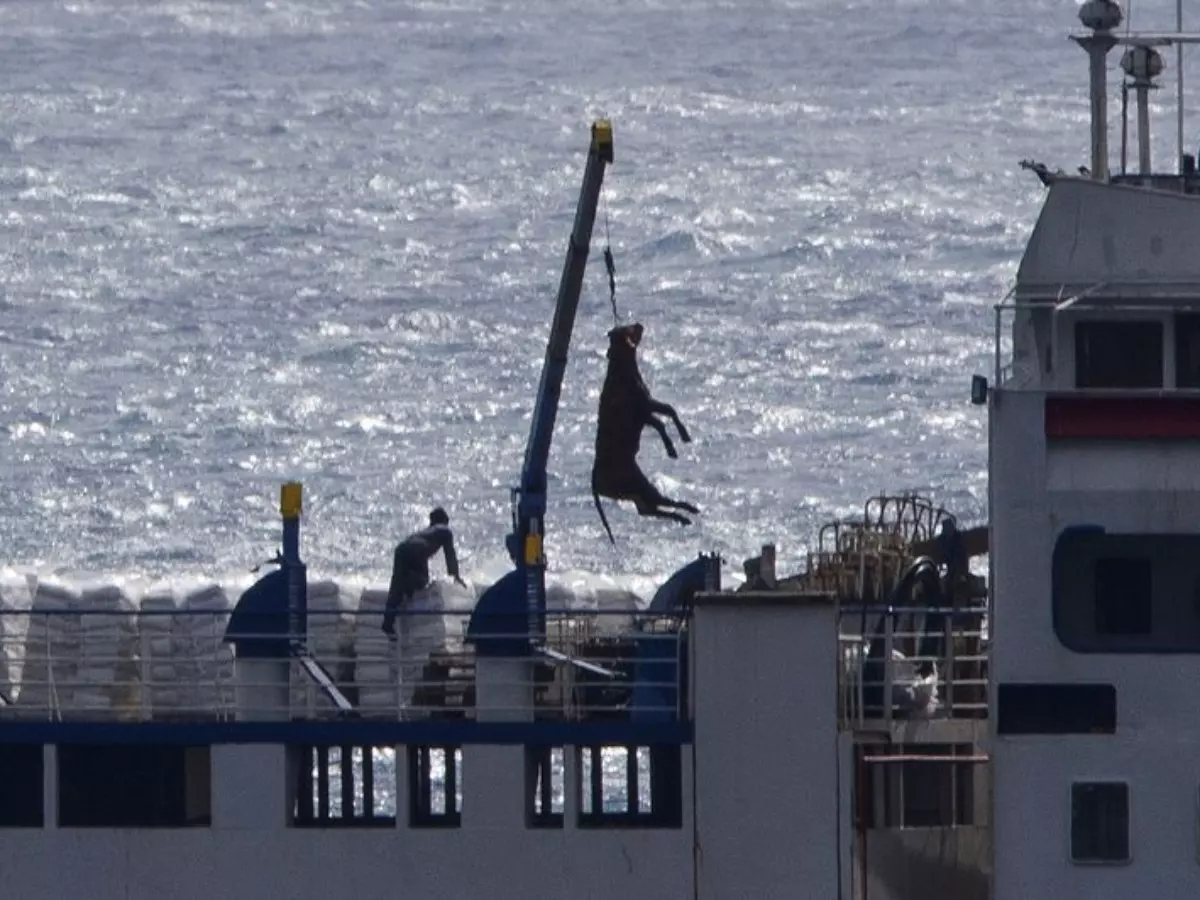Some Starved To Death, Some Put Down: 1,800 Cows Killed, Outrage Against Animal Shipping
In late December, some 1,800 bulls left Spain for Turkey aboard a ship called the Elbeik. The trip was supposed to take around 11 days, then the cattle were to be sold, mostly to halal slaughterhouses, where they¡¯d be killed with minimal suffering, as required by religious law. At least it would have been swift.

In late December, some 1,800 bulls left Spain for Turkey aboard a ship called the Elbeik. The trip was supposed to take around 11 days, then the cattle were to be sold, mostly to halal slaughterhouses, where they¡¯d be killed with minimal suffering, as required by religious law. At least it would have been swift.
Vessel failed to unload cargo
For the next three months, as the pandemic began to wreak havoc on global shipping, the vessel failed to unload its cargo, and the animals began to starve, according to an investigation by the Spanish government. Nearly 10% of the bulls died, their corpses thrown overboard or left to fester in the pens among the living.
 Bloomberg
Bloomberg
When the Elbeik returned to Spain, authorities ruled its remaining 1,600 animals were too sick to sell and had to be put down. The Elbeik has become Exhibit A in the mounting case to ban the controversial, $18 billion cross-border trade in live animals. The pandemic has worsened conditions for the roughly 2 billion cows, sheep, goats, pigs and chickens that are exported each year, and epidemiologists have joined the calls for reform.
Practice of shipping animals
Animals have been stuck in transit far longer than expected and safety inspections have been dramatically curtailed. With new sensitivity to risks that diseased animals can pose to humans, a growing number of countries are limiting or phasing out the practice altogether.
¡°When it comes to animal welfare, transport by sea is a big black hole,¡± said Thomas Waitz, an organic farmer from Austria who is a European parliamentary representative on a committee charged with updating the rules for the cross-border shipping of animals.
 REUTERS
REUTERS
¡°Ship transports completely fall outside of any regulations or animal-welfare standards. Public health is at risk if animals are transported in conditions where germs and bacteria can flourish.¡± The EU, which accounts for more than 75% of the world¡¯s live animal exports, is ¡°incapable of guaranteeing animal welfare,¡± according to a report commissioned by the committee, which is expected to recommend a new, tighter set of regulations for exporters by the end of the year.
Nations mulling ban
The U.K. has gone further, planning to ban the transport of live animals for slaughter altogether, though it hasn¡¯t set a date yet. New Zealand in April said it will phase out trade in live animals by 2023.
Some 39 million tons of meat were exported globally in 2019, most of it slaughtered, packaged and frozen or chilled beforehand ¡ª a process that¡¯s more lucrative for meat producers and avoids the health and safety issues of transporting live animals.
 Representational Image/AP
Representational Image/AP
But as consumers in countries like China and Vietnam have grown wealthier, they¡¯ve added more meat and dairy to their diets, amping up demand for breedstock and dairy animals. The robust market for halal meat among devout Muslims also means demand has spiked in recent years. Prices for live cattle from Australia are at record highs.
